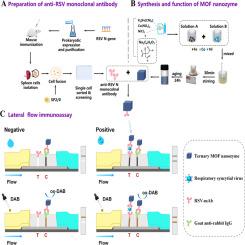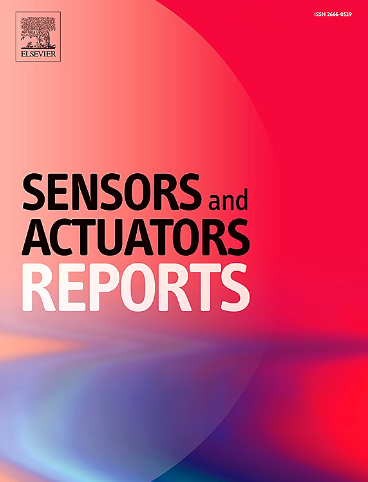Ternary Prussian blue nanozymes with synergistic multimetallic catalysis enable ultrasensitive lateral flow immunoassay for respiratory syncytial virus diagnosis
IF 7.6
Q1 BIOTECHNOLOGY & APPLIED MICROBIOLOGY
引用次数: 0
Abstract
Respiratory syncytial virus (RSV) is a major cause of lower respiratory tract infections in infants and children, and early and accurate diagnosis is crucial for its effective treatment and disease management. Here, we developed a nanozyme-enhanced lateral flow immunoassay (LFIA) that employed a newly generated monoclonal antibody against the conserved RSV nucleocapsid (N) protein. The platform was based on a ternary metal–organic framework nanozyme composed of iron, cobalt, and nickel ions, which exhibited synergistically enhanced peroxidase-like activity. This nanozyme efficiently catalyzed the oxidation of 3,3′ -diaminobenzidine, producing a colorimetric signal on the LFIA strip for visual detection. Due to the catalytic enhancement, the assay achieved a detection limit of 5 pg/mL for recombinant RSV N protein. For live RSV, the biosensor demonstrated a detection threshold of 100.875 TCID50/mL, representing a 1000-fold sensitivity improvement over AuNP-based LFIA. Moreover, the strip demonstrated high specificity and no cross-reactivity with other viruses. Owing to its simplicity, speed, and efficiency, the developed LFIA offers a robust point-of-care solution for RSV diagnosis. This platform holds great potential for clinical screening and early detection of viral infections, underscoring its value in future pandemic preparedness and respiratory disease surveillance.

具有协同多金属催化作用的三元普鲁士蓝纳米酶可用于呼吸道合胞病毒诊断的超灵敏侧流免疫测定
呼吸道合胞病毒(RSV)是婴幼儿下呼吸道感染的主要病因,早期准确诊断对其有效治疗和疾病管理至关重要。在这里,我们开发了一种纳米酶增强的侧流免疫测定(LFIA),该方法使用了一种新生成的针对保守的RSV核衣壳(N)蛋白的单克隆抗体。该平台基于由铁、钴和镍离子组成的三元金属-有机框架纳米酶,具有协同增强的过氧化物酶样活性。该纳米酶有效催化3,3 ' -二氨基联苯胺氧化,在LFIA条带上产生比色信号,用于视觉检测。由于催化增强,该方法对重组RSV N蛋白的检测限为5 pg/mL。对于活RSV,该生物传感器的检测阈值为100.875 TCID50/mL,比基于aunp的LFIA灵敏度提高了1000倍。该条带具有高特异性,与其他病毒无交叉反应性。由于其简单,快速和高效,开发的LFIA为RSV诊断提供了一个强大的护理点解决方案。该平台在临床筛查和早期发现病毒感染方面具有巨大潜力,强调了其在未来大流行防范和呼吸道疾病监测方面的价值。
本文章由计算机程序翻译,如有差异,请以英文原文为准。
求助全文
约1分钟内获得全文
求助全文
来源期刊

Sensors and Actuators Reports
Multiple-
CiteScore
9.60
自引率
0.00%
发文量
60
审稿时长
49 days
期刊介绍:
Sensors and Actuators Reports is a peer-reviewed open access journal launched out from the Sensors and Actuators journal family. Sensors and Actuators Reports is dedicated to publishing new and original works in the field of all type of sensors and actuators, including bio-, chemical-, physical-, and nano- sensors and actuators, which demonstrates significant progress beyond the current state of the art. The journal regularly publishes original research papers, reviews, and short communications.
For research papers and short communications, the journal aims to publish the new and original work supported by experimental results and as such purely theoretical works are not accepted.
 求助内容:
求助内容: 应助结果提醒方式:
应助结果提醒方式:


